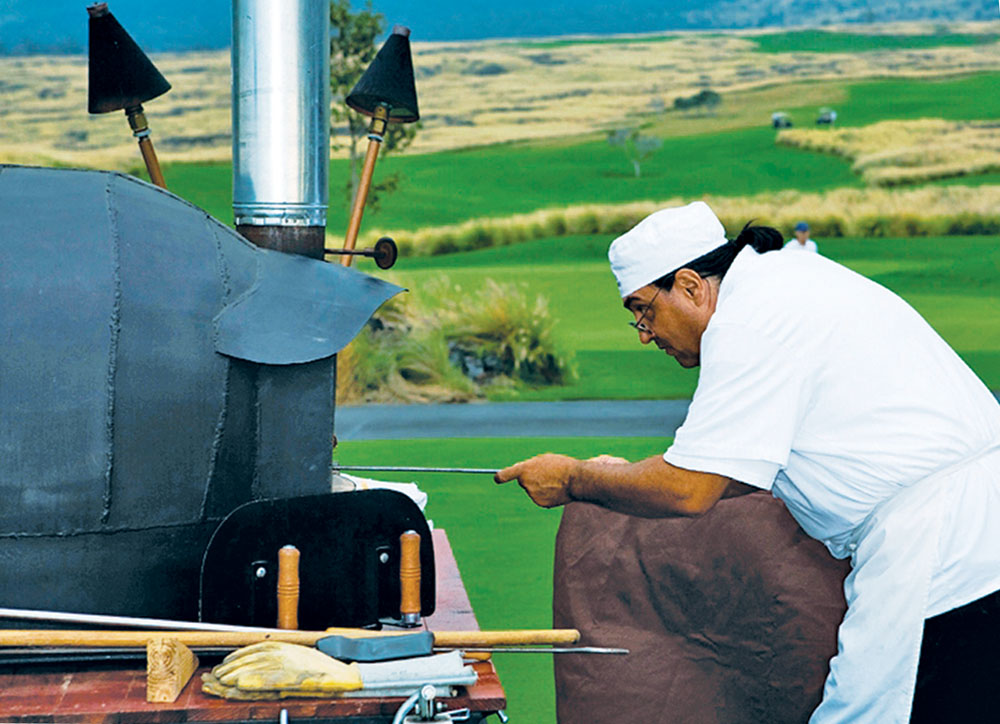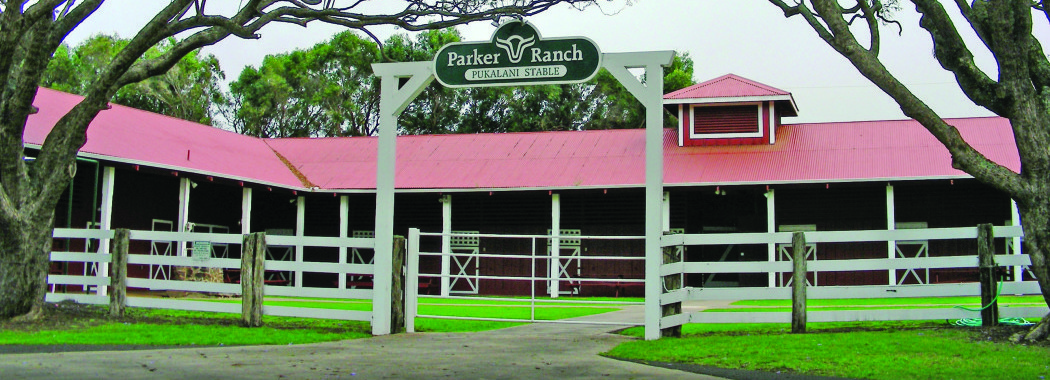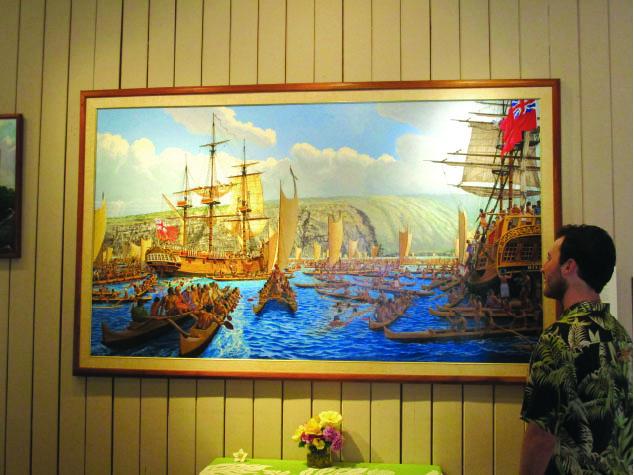
A Depository of Stories: Hawai‘i Plantation Museum in Pāpa‘ikou

By Catherine Tarleton
“I never thought I would be in the museum business,” says Wayne Subica, director of the Hawai‘i Plantation Museum in Pāpa‘ikou. Floor to ceiling, wall to wall, the old Onomea Plantation Store is filled with an ever-expanding collection of tin signs, factory parts, photos, models, bottles, baseball uniforms, bango tags (numbered tags issued to plantation laborers so they could be identified for payroll without the management needing to learn their employees’ foreign names), a restaurant booth, a phone booth, Pete Beamer’s buggy, and countless more items.
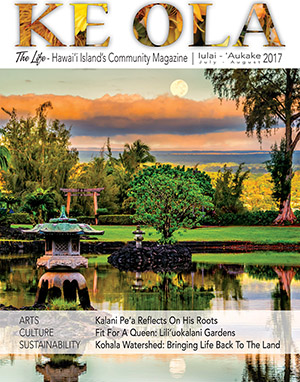
Wayne has been gathering plantation-era antiques since high school. He knows the story of every item, from “Mrs. Hanabata,” the museum’s mascot in cane field work clothes, to the koa wood scale model of a cane truck, complete with chains, that he built to show his grandchildren.
“No one was happier than Wayne’s wife when he opened the museum,” says Donna Johnson, Wayne’s associate and museum volunteer. Donna’s father was a crane operator at Hilo Coast Processing, and her grandfather was editor of the plantation newsletter, the “Onomea Echo.” The Frank M. Santos Park in Pāpa‘ikou is named after him.
Donna grew up in Pāpa‘ikou and remembers the store had the best burgers in town. She explains that much of the museum’s collection was donated by people with connections to plantation life, people who happened to come in with their memories and come back with treasures to share.
“That’s what happens every day,” Donna says. “People come here and start talking, and the next thing you know, everyone is family. We are a depository of stories.”
Wayne’s story begins in 1958, at age 14.

“My dad bought a Model A Ford,” says Wayne. “I would drive the Model A when I was about 14, before I even had a license. Dad sold the Model A and I was mad. So I bought one in Mountain View for $15. I didn’t take it home, I took it to a friend’s house. That ‘31 Model A was my first antique.”
After graduation, Wayne took a job with the US Department of Agriculture Soil Conservation Service.
When he traveled to Ka‘ū for work, he would spend the night at Wai‘ōhinu’s Shirakawa Motel, affectionately called the “Shirakawa Hilton,” an old hostel complete with a community bath.
“In the old days people would throw their rubbish in the yard,” says Wayne. “Behind the hotel I found a Primo bottle, lots of bottles. We would come back from Ka‘ū with a Jeep full of stuff.”
“When we bought the house we’re in now, I set up a 50’s soda fountain inside,” Wayne says. “I had a 7-Up machine set up for beer. We had all kinds—Bud, Coors, and soda for the kids. I had all this stuff in my house. A friend came from Honolulu and said ‘Wayne, you should open a museum.’”

He retired in 1999, and in 2004 opened a 1,500 square foot museum on Keawe Street in Hilo, where Ebesu’s Flowers used to be. “The first was mostly sports,” says Wayne. “I was there four years. The first year I ran out of room. People kept bringing me stuff.”
He looked at several locations in Hilo (too close to the tsunami evacuation zone) and Honomū (leaky roof) before the museum partnered with the Edmund C. Olson Trust in Pāpa‘ikou. The Trust also owns the Onomea Plantation building, next door to the museum, which houses a large, private collection of plantation documents, including maps, employee records and photographs. A museum volunteer is helping the Olson Trust preserve the documents.
Originally opened in 1900, the plantation store was a central part of sugarcane culture across the islands, selling goods to workers on credit. On payday, according to Wayne, the paymaster would sit next to the store manager, who took her cut from paychecks first, giving the employees whatever was left. The Yoshiyama family eventually took over the store, and operated it until its closure in 1997. After 14 years of standing empty, the store was completely renovated by Wayne and a cadre of dedicated volunteers, and opened as a museum in February 2013.
The museum’s front room is a greeting area, piled with miscellany begging to be explored. Prominently posted is a list of 85 sugar plantations on Hawai‘i Island, from Goodrich (1829–36) to Ka‘ū Agribusiness Co. (1986–1996). Many plantations became part of larger companies controlled by the “Big 5” as the industry evolved. For example, Onomea Sugar Co. and Hilo Sugar Co. (who had already absorbed two other companies), merged to become Mauna Kea Sugar Co. in the 1960s. In the 1970s, the five companies making up Hilo Coast Processing were also part of Mauna Kea Sugar until its closure in 1994.
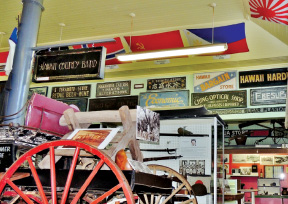
Above the list, a wood and tin foil display built by volunteer Leo Crivello, shows how the sugarcane flume system worked. Another volunteer with history, Glenn Carvalho, explains.
“They hand cut the cane in the field in 40-pound bundles,” says Glenn. “Then they put it on a portable flume drawn by horse. Then it went into the permanent flume and into the factory flume.” He points to a fading, sepia-tone photo: workers on a tall causeway across one of the Hāmākua gulches. “See that? No safety harness,” says Glenn. “If they fell their wife had to replace them or they were fired.”
Glenn has firsthand experience over many years of plantation work.
“I started in 1971 at Hakalau. I was on the crushing crew and I got crushed,” he says. “It was Labor Day 1971. They were ‘boiling off’ for the holiday. We were feeding the bagasse onto the conveyor belt with a 2×4 bolted to a chain. A pitchfork fell in and I yelled to stop the belt, and climbed in. Somebody heard somebody say to start up. It broke both my legs.”
“One of the doctors was on the way to the factory in case he had to amputate. They were using torches to cut me free—because what if the bagasse had caught fire? It made the front page of the paper—me on the stretcher, giving the peace sign. I was out of work for a year. After that, I went to work at Hilo Coast Processing as a diesel mechanic.” He fondly remembers being visited by his boss “Belly” Ugawa, and his family.
Glenn talks about the various tools and equipment, the red door of a sugarcane truck, the factory diagram—explaining that it’s not a “mill,” because only the rollers are mills. Using a piece of cane as a pointer, he taps the lids of labeled jars to tell about the process of refining sugar.
Then, he points up to a banner for the Hawai‘i County Band. “My dad was the high school band teacher in World War II,” Glenn says. “When the men were being drafted, my grandfather (Jules Carvalho) and great uncle (Joe King) founded the county band.
“You are the history of this place,” says Donna. “You think history is dead, stagnant. Not here. It’s always evolving.”
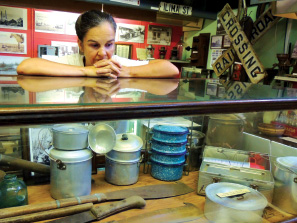
Donna stands by a display of everyday items that a sugarcane worker would use. There are handmade leggings to fend off centipedes, a wire “catcher’s mask” to protect face and eyes from the sharp grass, a canvas raincoat made waterproof with sap from the banana stump.
“I think the most iconic symbol of the era was the kaukau tin,” says Donna, pointing out a blue, stacked food carrier that would hold rice on the bottom and different dishes above. At the time, immigrant field workers from various ethnic groups lived in separate camps without much interaction. However, at lunch time, over familiar cuisine with tastes from home, they could share and compare, “borrow” words from various languages to describe the food and communicate with each other. “Kaukau” could have come from the Chinese word “chow” (food) or “kow” (test) and/or the Hawaiian word “pākaukau” (table). “Pidgin was born over food,” says Donna.
The back wall is lined with food things: bottles from Hilo Soda works, painted signs from mom & pop shops and eateries, a milkshake machine. On top of a glass case, the two-basket “yoke” of a manapua man. In the corner, the first thing Wayne installed in the museum: an entire booth from legendary ‘Ōla‘a Steakhouse in Hilo, complete with tabletop jukebox and a menu. The restaurant was opened by Yasuo and Aiko Ogata on Dec. 4, 1941, three days before the Japanese attack on Pearl Harbor.
“‘Ōla‘a Steak House had the best beef you could buy in the Territory of Hawai‘i,” says Glenn. “All local beef. Some said they fed the cows papaya or massaged them with papaya.”
Donna points out a large sign with faded stars and bars. She explains that during World War II, Japanese immigrants had a very tough time. If their store had a Japanese name, and kanji, many shopkeepers would paint over it to show their patriotism.
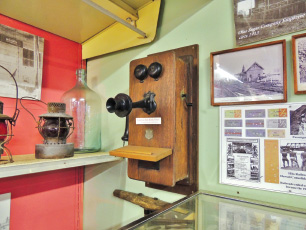
Nearby, a cabinet holds gas masks, military memorabilia, and weapons. After the attack on Pearl Harbor, each plantation formed defensive units called the Hawai‘i Rifles, intended to protect their community in case the Territorial Guard (later National Guard) was called up. Wayne says that the Guard loaned some equipment, but the men trained with brooms before they got rifles, and were called the ‘Broom Brigade.’ “The day the war ended, they stopped,” he says.
After decades of collecting, research and talking story with the community, Wayne’s hobby has grown into an interactive history lesson that expands beyond four walls. Somehow, in his spare time, Wayne shares even more knowledge and experience in ten books (for sale in the museum), just as packed with photos, stories and slices of life as the museum itself.
“It’s funny,” Wayne says with a laugh. “My two worst subjects in school were English and History.” ❖
The Hawai‘i Plantation Museum is located in the old Onomea Sugar Plantation Store at 27-246 Old Māmalahoa Highway in Pāpa‘ikou. It is open Tuesday–Saturday 10am to 3pm, closed Sunday, Monday, and holidays. Admission is $6 for Kama‘āina and Seniors, $8 Adults, $5 Military, $3 Children 6–17 and Free for Children under 5. Private and group tours can be arranged. For more information, please call 808.964.5151 or visit plantationmuseum.org.
